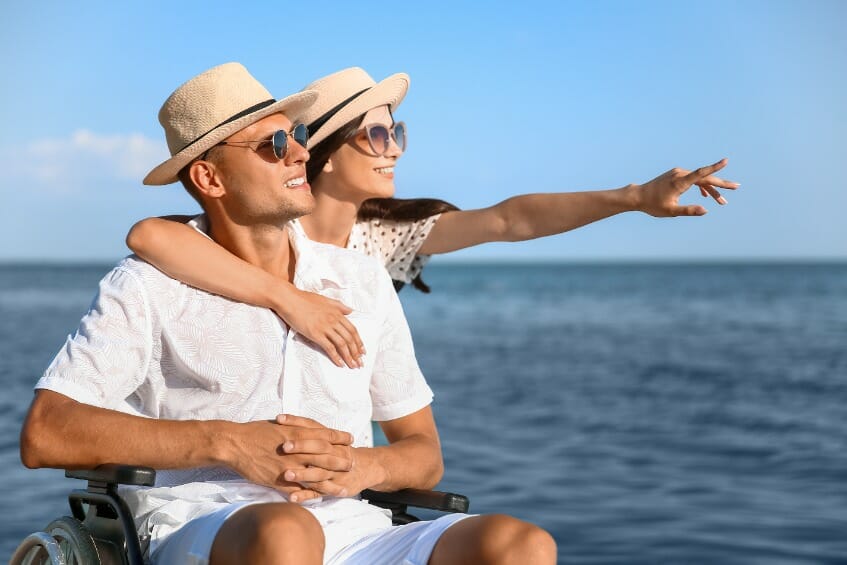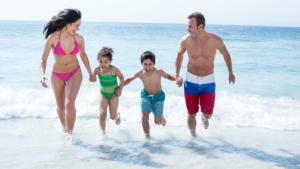When you go on a trip, what do you think of? Maybe you think of what hotel you are going to stay at or what attractions you want to see. Disabled people and/or people with limitations are forced to factor in the inaccessibilities while traveling such as transportation difficulties, flight inaccessibilities, etc. The extra amounts of time and effort disabled people have to put into traveling can be overwhelming and oftentimes not necessary if people in power heard the disability communities’ outcries.
Before 1973, there were no outlets for people with disabilities. There were no resources, fairness, or equality for people with disabilities. In today’s age, disabled people have to plan their trips extensively ahead of time. Planning a trip usually entails figuring out where you’re staying, what sights to see, and how you’re getting to and from places. When disabled people have to book a place to stay they have to make sure it fits their needs, whether it be no stairs, wider doorways, etc.
Carolyn Barrett, a disabled adult from Boston, said “When I travel by air, I look for accessible transportation to and from the airport and getting around my destination. I also look for accessible hotels with roll in showers.”
READ ALSO: Whispering Hope Ranch Foundation receives more than $230,000 in funding
READ ALSO: W.I.S.E. Scholarship Program expands into Arizona
Many websites or apps don’t display the look of the room or house you would be booking. It gets even trickier with Airbnb because they don’t need to follow accessibility guidelines that hotels have and you can’t book an accessible room whilst knowing what to expect.
Barrett goes on to say that, “Usually it is easy to determine via a website if a hotel has a roll in shower. It is less easy to know if there will be room around the toilet and if the bed is high enough for someone to easily transfer me. I don’t book Airbnb’s unless absolutely necessary because accessibility is too hard to confirm and their fees are a rip off.”
While there may be pictures of the Airbnb, if it doesn’t show the features that the disabled community need to know then it’s not as simple as calling a hotel company for clarification about the room or property. In addition, when people with disabilities are in new places while traveling, sightseeing takes more research and preparation when exploring. Many tourist attractions don’t display the accessible aspects of their attraction. If they do, oftentimes they’re inaccurate or extremely vague. Due to this oversight, the disabled community is forced to take things into their own hands. Maayan Ziv, a disability activist and entrepreneur, created an app called “AccessNow” to give disabled people a resource to use while traveling. On this app, you’re able to search a place anywhere in the world and see what others have had to say about its accessibility. While this is a start, the disability community continues to deal with countless roadblocks when planning trips.
Flying as a person with a disability can be argued as one of the hardest aspects of inaccessible traveling. Wheelchair users are not allowed to keep their chairs with them on planes, but rather are forced to transfer and have their chairs stored underneath. The seats on the plane are not spacious nor adjustable, making it difficult or near impossible for a big portion of the disabled community to fly. Bella Andrade, a disabled out of state ASU student, described the process she goes through when flying. One of the first hurdles she deals with is going through security where she has “to sit and wait in front of the metal detector until a female TSA agent pats me down, which is extremely difficult.” She goes on to explain that once she is at the gate, she has to give
detailed instructions to the person handling her chair and tells them “these are my legs…if you break them you ruin my entire vacation.” According to the Los Angeles Times, “Airlines damage or lose an average of 26 wheelchairs a day.” A wheelchair is often described as an extension of the person in the chair, so flying is taking a big risk because there’s a high chance of your chair being ruined. This would cause the afflicted person to arrive in a new place with no way to get around. Alyssa Francis, a caregiver to an adult with a physical disability, said “flying while taking care of someone disabled can be extremely difficult and if they made accessible planes it would be so much easier.” Due to the extra work and added fears, flying takes a very large toll on people with disabilities.
While there has been a breakthrough in accessible public transportation such as, city buses having ramps, designated seats on the lightrail, etc., disabled people with personal vehicles or people who can’t use public transportation have to jump through extra hoops. Driving, which many people do on a daily basis, is not as simple for people with disabilities. While public transportation has built-in accessible features, getting a personal vehicle that’s adapted is not always possible. According to Aero Mobility, an adaptive vehicle company, “Conversion prices currently range from $10,000 to $35,000 and upward.” This means that in addition to buying a car at full price, conversions/adaptations are an added expense. Another option is to purchase an already-equipped car. However, oftentimes this can be more expensive because one size does not fit all. Regardless, the total price of a wheelchair accessible vehicle is generally around
$100,000. Depending on the adaptations the wheelchair user requires the prices can get significantly higher. While there are great strides being made toward accessible travel, such as the app “AccessNow” and wheelchair accessible planes being crash-tested, the disabled community continues to deal with the uncertainties and safety issues while traveling.




